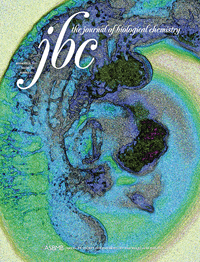 The Journal of Biological Chemistry is retracting four papers by a pair of cancer researchers at Tulane University, bringing their total to eight.
The Journal of Biological Chemistry is retracting four papers by a pair of cancer researchers at Tulane University, bringing their total to eight.
The retractions are all for reusing parts of figures, either within a paper or from other papers by the pair. Thanks to a new policy at the journal to publish informative notes, we know the figures that were problematic, and the papers that they borrow from.
An investigation by Tong Wu and Chang Han’s former employer, the University of Pittsburgh, had already led to four retractions for the pair, including two issued this summer.
First up, “Activation of cytosolic phospholipase A2α through nitric oxide-induced S-nitrosylation. Involvement of inducible nitric-oxide synthase and cyclooxygenase-2,” which has been cited 50 times, according to Thomson Scientific’s Web of Knowledge. Here’s the note:
This article has been retracted by the publisher. The input cPLA2α immunoblot from A549 cells in Fig. 1A was reused from the Akt immunoblot in Fig. 2C from the following reference (Xu, L., Han, C., Lim, K., and Wu, T. (2006) Cross-talk between peroxisome proliferator-activated receptor delta and cytosolic phospholipase A2α/cyclooxygenase-2/prostaglandin E2 signaling pathways in human hepatocellular carcinoma cells. Cancer Res. 66, 11859–11868), and the iNOS immunoblot from Fig. 9A was reused from the actin immunoblot in Fig. 2B from the following reference (Xu, L., Han, C., and Wu, T. (2006) A novel positive feedback loop between peroxisome proliferator-activated receptor-δ and prostaglandin E2signaling pathways for human cholangiocarcinoma cell growth. J. Biol. Chem. 281, 33982–33996).
Second, here’s the note for “15-Hydroxyprostaglandin dehydrogenase-derived 15-keto-prostaglandin E2 inhibits cholangiocarcinoma cell growth through interaction with peroxisome proliferator-activated receptor-γ, SMAD2/3, and TAP63 proteins,” which has been cited 10 times:
This article has been retracted by the publisher. Images were reused to represent different experimental conditions in Fig. 7, D and G.
Third, here’s the note for “Transforming growth factor-β (TGF-β) activates cytosolic phospholipase A2α (cPLA2α)-mediated prostaglandin E2 (PGE)2/EP1 and peroxisome proliferator-activated-γ (PPAR-γ)/Smad signaling pathways in human liver cancer cells. A NOVEL MECHANISM FOR SUBVERSION OF TGF-β-INDUCED MITOINHIBITION,” which has been cited 54 times:
This article has been retracted by the publisher. The actin immunoblot from Fig. 1B was reused in Fig. 1D to represent different experimental conditions.
And finally, “A novel positive feedback loop between peroxisome proliferator-activated receptor-δ and prostaglandin E2 signaling pathways for human cholangiocarcinoma cell growth,” which has been cited 59 times. Here’s the note:
This article has been retracted by the publisher. The actin immunoblot in Fig. 2B was reused as the iNOS immunoblot in Fig. 9A of the following reference (Xu, L., Han, C., Lim, K., and Wu, T. (2008) Activation of cytosolic phospholipase A2 through nitric oxide-inducedS-nitrosylation. INVOLVEMENT OF INDUCIBLE NITRIC-OXIDE SYNTHASE AND CYCLOOXYGENASE-2. J. Biol. Chem. 283, 3077–3087). Portions of the PPARδ immunoblot from Fig. 8E were reused to represent p-EGFR in Fig. 2C of the following reference (Xu, L., Han, C., Lim, K., and Wu, T. (2006) Cross-talk between peroxisome proliferator-activated receptor δ and cytosolic phospholipase A2α/cyclooxygenase-2/prostaglandin E2 signaling pathways in human hepatocellular carcinoma cells. Cancer Res. 66, 11859–11868).
When we asked Kaoru Sakabe, the Manager of Publication Issues at the the American Society for Biochemistry and Molecular Biology, which publishes JBC, for more info she told us:
As for information regarding the recent retractions, please refer to the notices.
Wu and Han were the subject of a website by an anonymous tipster under the pseudonym, Juuichi Jigen, which highlighted issues with study images in six papers authored by the pair. Two of those papers are among the newest JBC retractions. One, a 2006 paper in Cancer Research, remains untouched. We’ve contacted the journal to see if it has investigated the paper.
We’ve also reached out to Wu and Han, and will update this post with anything else we learn.
Like Retraction Watch? Consider making a tax-deductible contribution to support our growth. You can also follow us on Twitter, like us on Facebook, add us to your RSS reader, and sign up on our homepage for an email every time there’s a new post. Click here to review our Comments Policy.
This pair has nearly 50 joint publications. Wonder whether any of these also contain re-use of figures.